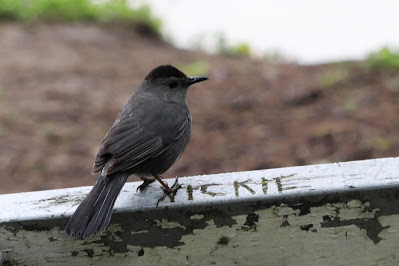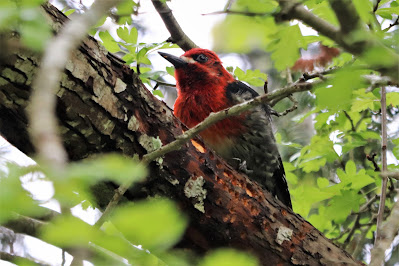An Exciting Insect Morning!
I don't know who was more surprised this morning; the giant silk moth or me. I have never before noticed a Polyphemus Moth in the yard. While watering the garden, the moth flew out of its hiding spot to let me know it no longer wished to be in the shower. Polyphemus Moths can have a wingspan of 10-15 cm (4-6 inches)!!
After it dried off, it flew to a new hiding spot and closed its wings. As adults, Polyphemus Moths live a maximum of 4 days. Their entire life cycle lasts about 3 months which includes 10 days as an egg, 5-6 weeks as a larva and 2 weeks as a pupa.
https://animaldiversity.org/accounts/Antheraea_polyphemus/
A Swamp Milkweed Leaf Beetle greeted me in the front yard.
The Eastern Forktail is a typical Damselfly since it holds its wings together behind the body. I found this individual in Canatara Park this morning. Immature Eastern forktails are orange, as above. An adult male is green and black with a blue tip to the abdomen.
Deciduous and mixed forest edges, including road sides and clearings make up the habitat preferences for the Hobomok Skipper. They will nectar on a variety of flowers. The ROM Field Guide to butterflies of Ontario, Peter W. Hall...The Common Checkered Skipper is one of my favourite butterflies. I was happy to find my "First of the Year" this morning. I expect to see them in the yard later in the summer once the Brown-eyed Susans are in bloom.adults (moths), polyphemus moths live a maximum of only 4 days. Their entire life cycle averages about 3 months in length. This includes about 10 days as eggs, 5 to 6 weeks as larvae, 2 weeks as pupa, and about 4 days as adults. If they overwinter as pupa, this life cycle increases in length. (Vaughn, 2006)
adults (moths), polyphemus moths live a maximum of only 4 days. Their entire life cycle averages about 3 months in length. This includes about 10 days as eggs, 5 to 6 weeks as larvae, 2 weeks as pupa, and about 4 days as adults. If they overwinter as pupa, this life cycle increases in length. (Vaughn, 2006)


















.JPG)








.JPG)










.JPG)

















